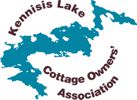Updated Feb 2025
The Trent-Severn Waterway (TSW) is an interconnected series of lakes, improved river channels and artificial canal cuts stretching for 386 km through the heart of Ontario. The water in the system comes from two major watersheds: Trent and Severn. The Trent River is the largest river in Southern Ontario while Lake Simcoe in the Severn watershed is the largest lake. The Waterway, including its tributary lakes and rivers, is an important economic, environmental and recreational resource used by thousands of boaters, shoreline residents, businesses and vacationers every year. It also provides water for power generation, municipal water supplies, and agriculture and supports a tremendous variety of fish and wildlife.
The Trent-Severn Waterway is one of nine heritage canals managed by Parks Canada across the country. It forms part of a navigable network that connects to the Rideau Canal National Historic Site in Ontario and heritage canals in Quebec to the east.
The Trent-Severn Waterway is divided into four administrative areas, with offices in Campbellford, Lakefield, Kirkfield, and Haliburton. Waterway Headquarters is in Peterborough.
The Kennisis Lake Dam is one of the headwater dams on the Trent-Severn Waterway and controls the water level in the Kennisis Lakes.
Parks Canada’s water management team actively monitors water levels and flows, and weather forecasts across the Trent-Severn Waterway. These factors are used to determine dam operations on a daily basis for the waterway.
More information about the operation of the Trent-Severn Waterway can be found here:
Trent-Severn Waterway National Historic Site
The Coalition for Equitable Waterflow (CEWF) advocates on our behalf, regarding TSW water level management and practices.
These two CEWF videos explain the operation of the TSW, the impact of climate change on water levels and what you can do to manage your shoreline and docks.
